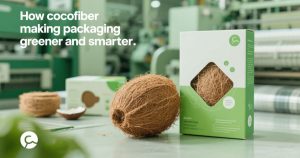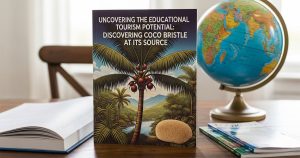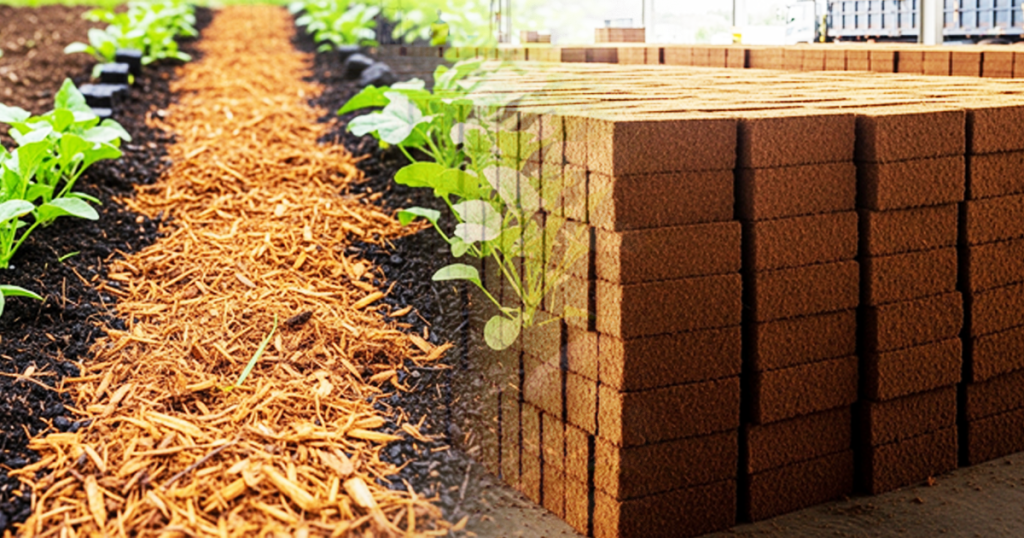Understanding the Life Cycle of Coco Bristle Products
Coco bristle, derived from the outer husk of coconuts, is widely used in household brushes, industrial scrubbers, and natural cleaning tools. These products, though biodegradable, raise questions about their afterlife.
As environmental consciousness rises, many wonder whether coco bristle items can be recycled rather than discarded or composted. The answer lies in understanding both the material and its treatment during use.
Naturally resistant to moisture and microbial degradation, coconut fibers are long-lasting. However, their exposure to oils, synthetic detergents, and grime can alter their properties.
In a recent study on fiber resilience, we observed that brushes used in industrial kitchens degrade faster than those used in dry applications. This difference affects their potential for reuse or recycling in secondary forms.
Is Recycling Coco Bristle Truly Possible?
Material Composition and Recycling Challenges
Recycling coco bristle is technically feasible but practically limited. The bristles themselves are entirely plant-based, making them biodegradable. However, their fusion with synthetic handles or adhesives complicates mechanical separation.
An used coco bristle brush is often a composite product, which requires disassembly before any material recovery can begin.
Additionally, many products contain plastic backings or rubber inserts. When attempting to recycle the fiber, these contaminants must be removed to avoid interference with composting or reprocessing. Manual sorting is labor-intensive, and automated methods are not yet common in low-tech recycling facilities where coconut products are often handled.
Bio-Recycling: Composting as a Viable Route
In regions where composting infrastructure is accessible, bio-recycling offers an ideal solution. After proper cleaning, coco bristle can be shredded and mixed with organic waste to produce high-quality compost.
This process restores carbon-rich content to soil, supporting regenerative agriculture. However, consumers must ensure that the bristle is free of chemical residues.
A field experiment conducted in rural Indonesia demonstrated that shredded coco bristle, when composted with vegetable peels and manure, broke down within 120 days under controlled humidity. The final compost showed improved aeration properties, suggesting that bristle fiber can serve as a carbon additive in low-nitrogen compost piles.
Techniques for Upcycling Used Coco Bristle
Craft-Based Reuse at the Community Level
Beyond composting, communities are exploring creative reuse. In India and the Philippines, social enterprises are turning discarded brushes into art pieces, floor mats, and even rustic plant holders.
The technique involves soaking used bristles in saltwater, sun-drying them, and re-bundling them into new shapes. These low-cost methods reduce landfill contributions and support local economies.
For example, in Kerala, artisans affiliated with eco-craft collect old coconut brushes and reassemble them into decorative broom heads. This form of upcycling doesn’t require industrial tools, just labor and knowledge of fiber behavior.
However, scalability remains an issue, especially where waste collection systems are not optimized for separation.
Industrial Conversion into Fiber Boards
A more advanced form of recycling involves processing old bristles into fiber panels. These panels, used in packaging or acoustic insulation, require the bristles to be cleaned, pulverized, and pressed with biodegradable binders.
While promising, this technology is still in pilot stages due to high operational costs and the need for consistent raw material quality.
My team recently collaborated with a materials lab in Bandung to develop a prototype of a coco bristle panel infused with tapioca-based glue.
Early testing showed moderate tensile strength, making it suitable for indoor applications like partition walls. Further R&D is needed to ensure fire resistance and waterproofing without resorting to non-natural additives.
Consumer Education and Policy Support
For coco bristle recycling to become widespread, consumer awareness is crucial. Users must learn how to clean, separate, and dispose of these products correctly. Labeling products with end-of-life instructions can greatly improve recycling outcomes.
Additionally, policy support in the form of green subsidies for recycling businesses can drive innovation.
Governments in coconut-producing countries must integrate coco bristle recycling into broader waste management frameworks. Incentives for small recyclers, grants for eco-innovation, and educational campaigns are vital to build a circular economy rooted in local materials like coconut fiber.







